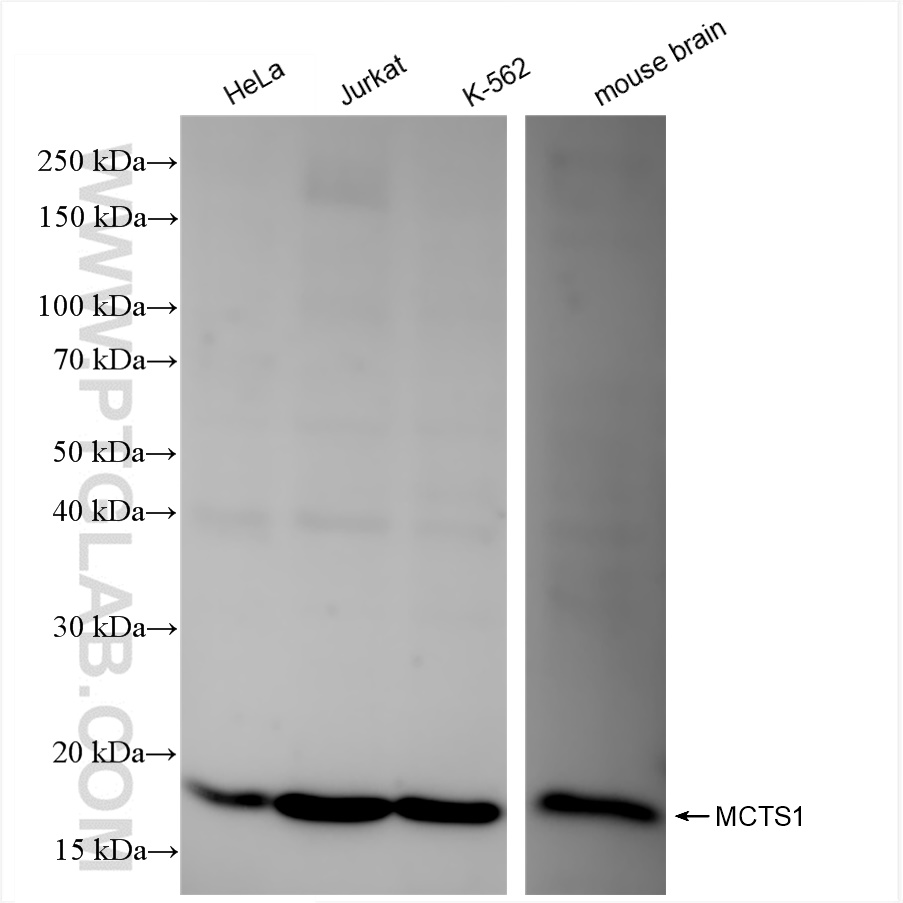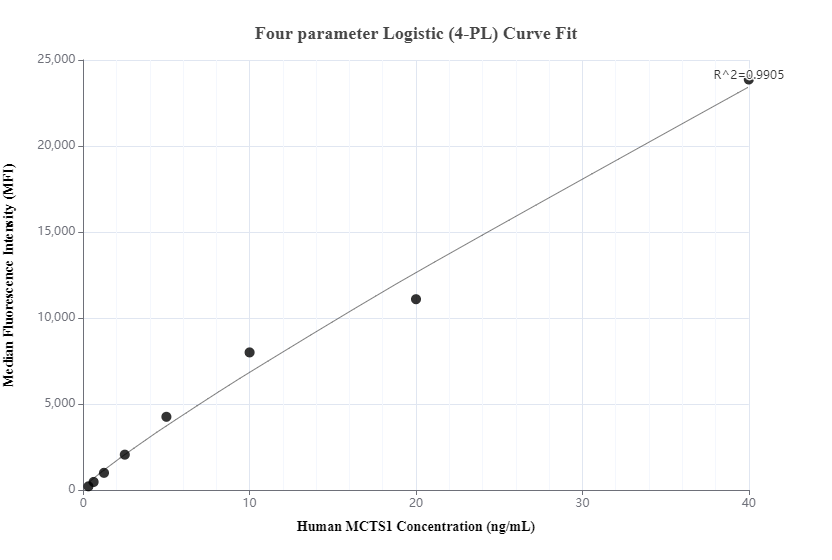验证数据展示
产品信息
84312-2-PBS targets MCTS1 as part of a matched antibody pair:
MP01214-2: 84312-2-PBS capture and 84312-3-PBS detection (validated in Cytometric bead array)
Unconjugated rabbit recombinant monoclonal antibody in PBS only (BSA and azide free) storage buffer at a concentration of 1 mg/mL, ready for conjugation. Created using Proteintech’s proprietary in-house recombinant technology. Recombinant production enables unrivalled batch-to-batch consistency, easy scale-up, and future security of supply.
This conjugation ready format makes antibodies ideal for use in many applications including: ELISAs, multiplex assays requiring matched pairs, mass cytometry, and multiplex imaging applications.Antibody use should be optimized by the end user for each application and assay.
| 经测试应用 | WB, Cytometric bead array, Indirect ELISA Application Description |
| 经测试反应性 | human, mouse |
| 免疫原 | MCTS1 fusion protein Ag6968 种属同源性预测 |
| 宿主/亚型 | Rabbit / IgG |
| 抗体类别 | Recombinant |
| 产品类型 | Antibody |
| 全称 | malignant T cell amplified sequence 1 |
| 别名 | Multiple copies T-cell malignancies, MCT-1, MCT1, Malignant T-cell-amplified sequence 1, 241576F2 |
| 计算分子量 | 21 kDa |
| 观测分子量 | 18-21 kDa |
| GenBank蛋白编号 | BC001013 |
| 基因名称 | MCTS1 |
| Gene ID (NCBI) | 28985 |
| 偶联类型 | Unconjugated |
| 形式 | Liquid |
| 纯化方式 | Protein A purification |
| UNIPROT ID | Q9ULC4 |
| 储存缓冲液 | PBS only , pH 7.3 |
| 储存条件 | Store at -80°C. The product is shipped with ice packs. Upon receipt, store it immediately at -80°C |
背景介绍
MCTS1 is an anti-oncogene that plays a role in cell cycle regulation. It can reduce cell doubling time and anchor-dependent growth. The G1 transition time and the duration of the G1 / S transition are shortened. It can also promote the release of deacylated tRNA and mRNA from recycled 40S subunits following ABCE1-mediated dissociation of post-termination ribosomal complexes into subunits (PMID: 10440924).


